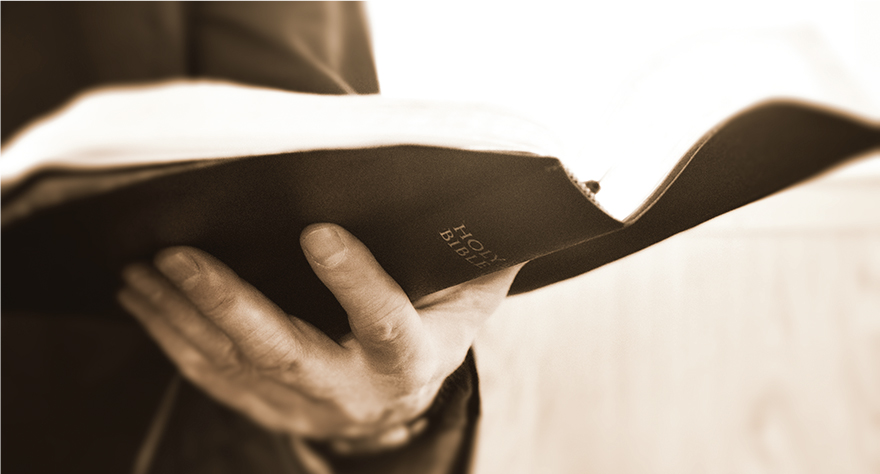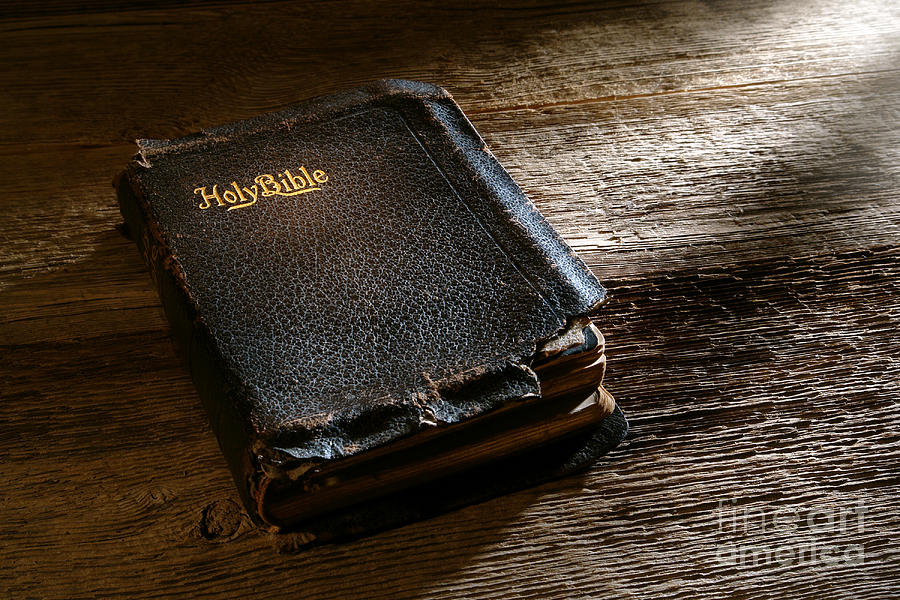The codex form of book making—book as a volume— wasn’t broadly used until 300AD, developing at the same time as the Latinization of Christianity. Although the idea of “bible” accompanies the use of the codex form, a single volume made up of 66 “books”, before 300, there was no Bible, only a collection of books that were commonly read in a synagogue or church. There was a basket or two, owned by the community, which contained a collection of scrolls which were used for liturgical reading. These baskets couldn’t contain 66 books, so they held what was most important for the community. Local schools might contain quite a number more books, and these books were read aloud and discussed even louder. But the idea of a “canon” or officially recognized set of books by a religious group isn’t to be found early on. There were books that were found to be true and books that were found to be false, and false books were avoided.
 |
| An ancient book. The reason why Samuel had to be split into two books. It was one book that couldn't be fit into a single scroll. |
When Jewish or Christian leaders got together, what they were surprised at is what books they had in common, what they all read. They made lists of what they had in common, and was surprised at this list’s length. These lists of common books are the first canon. An idea of an official list became more common as the idea of heresy became more common. The gospels could not be read in the synagogue, and gnostic gospels could not be read in orthodox churches.
But what really created a list of official Scriptures was a Christian teacher named Marcion. He was a bishop of the second century that taught that the God of the Hebrew Scriptures was a different God from the God of Jesus. Most importantly, he taught that the only official Scriptures to be read was the book of Luke and Paul’s thirteen letters. It was after this, that a list of common writings were collected by Christian leaders in order to say, “These are completely acceptable to read in church as well.” The original idea of canon was less to exclude, but to firmly include a much broader range of Scriptures. While Marcion excluded the entire Old Testament and half of the New Testament, the Christian leaders accepted a much broader range of Scriptures.
Up to the time of the Reformation (around 1500), there were just a bunch of books that people read, some Jewish, some Christian. A solidified canon only became more important after the Protestants began speaking of Sola Scriptura, or “Scripture alone”. By this the Reformers didn’t mean that Scripture was the only book to read, but that the official teaching of salvation was to be found only in Scripture, and that all else was tradition that was not to be official church teaching.
 |
| The democratization of the Bible: A bible for every hand |
Of course, this didn’t put the scholarly theologians out of work. For the “sake of the people” they had to help folks understand what Scripture really was. The Protestants limited their Bible to Hebrew Jewish texts and to 27 New Testament Greek texts. The Roman scholars also accepted some Jewish books that were only found in Greek, such as the books of Maccabees, Tobit and some Greek additions to the book of Daniel. The Roman scholars kept the original idea of opening official writings to a broader set.
It is the Protestant scholars that gave us our modern idea of “the Bible”: an established unit of books contained in a single volume containing the entirety of God’s word. This idea was very popular because each man could hold in his hand the word of God and read it for himself. It was empowering to be able to speak truth that the scholars or priests did not teach yourself.
The Anabaptists took the second step to affirm to each person that it was unnecessary for a person to hold a degree or to know the ancient languages to form official teachings that the church should follow. Of course, they were killed by both Catholics and Protestants, but that didn’t stop the popularity of their idea.
 |
| Many canons or one? |
At the same time, Jesus and Paul occasionally disagree with Moses, even while proclaiming the books of Moses to be Scriptural. Jesus marginalizes Moses’ teaching of the Sabbath by saying that it need not be followed consistently (Matthew 12:1ff). Paul declared that Moses was a “tutor” necessary only to lead us to the Christ, the true teacher, and then he may be discarded (Galatians 3:23-26). Jesus questions Moses’ motivation for writing one scriptural law, while affirming another portion of Moses’ law (Mark 10:1-9).
It seems as if having an official unit of Scripture isn’t necessarily a Scriptural point of view. Certainly having a Scripture that cannot be disagreed with isn’t Scriptural.
But it is foolish to say that there isn’t a canon. There is a canon (or a number of different canons) of Scripture that is read by millions of people daily, trusted by them and loved by them. To have a canon is not a limitation, but it is empowering for the everyday person to have access to the official teaching of God. But it need not be a mark of salvation.

No comments:
Post a Comment